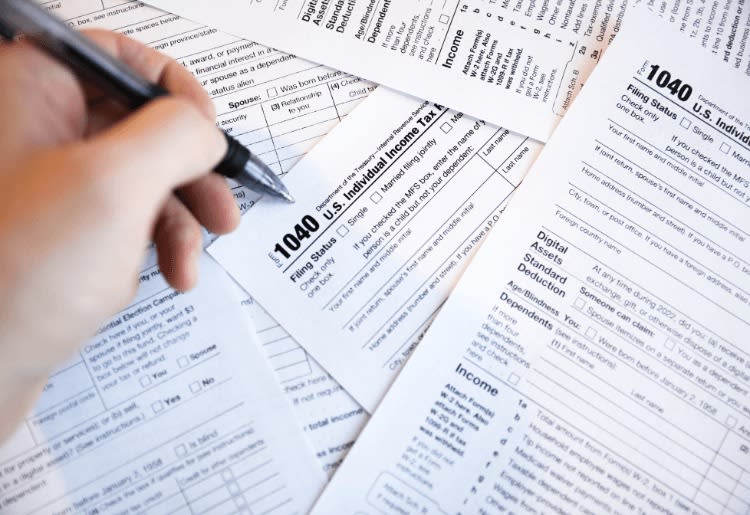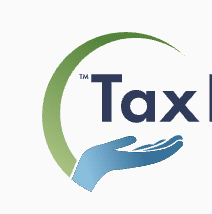
Understanding these brackets helps you calculate your actual tax liability and plan strategies to minimize what you owe.
According to the Tax Foundation, the 2025 tax year brings inflation-adjusted bracket thresholds that are approximately 2.8% higher, plus increased standard deductions that could lower your effective tax rate even if your income rises.
"Understanding tax brackets is the key to effective tax planning, particularly for those with variable income or significant deductible expenses. The goal is to optimize timing across high and low-income years to pay the least amount legally required over the long term," says David Kindness, CPA and Founder of Your Creative CPA.
This guide breaks down the 2025 federal income tax brackets by filing status, explains how progressive taxation works, and provides planning strategies to optimize your tax situation.
Key Insights
- Tax rates stay the same (10%-37%), but income thresholds increase by ~2.8% for inflation.
- Standard deductions rise: $15,000 (single), $30,000 (married joint), $22,500 (head of household).
- The top 37% rate kicks in at $626,350 (single) and $751,600 (married joint).
- Personal exemptions remain suspended at $0 through 2025.
What Are Federal Income Tax Brackets?
Federal income tax brackets are income ranges that determine the tax rate applied to different portions of your earnings. Each bracket has a specific tax rate, from 10% for the lowest earners to 37% for the highest income levels.
The United States tax system is progressive, meaning tax rates increase as your income rises through different brackets. This structure was designed to ensure that higher earners pay proportionally more while protecting lower-income taxpayers from excessive tax burdens.
"A progressive tax system means the more money you make, the higher your last tax dollar falls into. This ties directly into the marginal tax rate, which implies the sliding scale that a taxpayer progresses up as they earn more income," explains Andrew Van Alstyne, Enrolled Agent and financial advisor at Fiduciary Financial Advisors.
"The effective tax rate is the average rate at which the taxpayer pays taxes. The progressive/marginal system can be viewed as buckets filled up, only increasing to a higher percentage once the previous income bracket is filled."
What's New for 2025 Federal Tax Brackets?
The 2025 tax year introduces several important changes that could affect your tax liability and planning strategies.
Inflation Adjustments Increase Bracket Thresholds
According to the IRS, all income thresholds for 2025 tax brackets increased by approximately 2.8% compared to 2024 levels. This inflation adjustment means you can earn more money before moving into a higher tax bracket, providing natural protection against bracket creep.
Higher Standard Deductions Reduce Taxable Income
The Internal Revenue Service announced significant increases to standard deductions for 2025:
Single filers: $15,000 (up $400 from $14,600 in 2024)
Married filing jointly: $30,000 (up $800 from $29,200 in 2024)
Head of household: $22,500 (up $600 from $21,900 in 2024)
Married filing separately: $15,000 (up $400 from $14,600 in 2024)
Chained CPI Indexing Method
Since 2018, the IRS has used the Chained Consumer Price Index (C-CPI-U) rather than the traditional Consumer Price Index (CPI-U) to adjust tax brackets for inflation. According to the Congressional Research Service, the C-CPI-U typically increases more slowly than the CPI-U, which could result in more taxpayers moving into higher brackets over time compared to the previous indexing method.
Personal Exemptions Remain Suspended
Personal exemptions continue to be suspended at $0 through 2025 under the Tax Cuts and Jobs Act of 2017, as confirmed by both the IRS and Tax Foundation.
The inflation adjustments provide real benefits for taxpayers. According to Kindness, the 22% tax bracket threshold increased by:
Single filers: $1,325 increase (from $47,151 to $48,476)
Married couples: $2,650 increase (from $94,301 to $96,951)
"This means single filers can earn an extra $1,325 at the lower 12% rate instead of 22%. Married couples get $2,650 more income, protected from the higher bracket. It helps prevent 'bracket creep' where inflation pushes people into higher tax rates even when their purchasing power hasn't really increased," explains Kindness.
2025 Federal Tax Brackets by Filing Status
According to the IRS Revenue Procedure 2024-40, the following brackets apply for 2025:
Tax Rate | Single | Married Filing Jointly | Head of Household | Married Filing Separately |
10% | $0 - $11,925 | $0 - $23,850 | $0 - $17,000 | $0 - $11,925 |
12% | $11,926 - $48,475 | $23,851 - $96,950 | $17,001 - $64,850 | $11,926 - $48,475 |
22% | $48,476 - $103,350 | $96,951 - $206,700 | $64,851 - $103,350 | $48,476 - $103,350 |
24% | $103,351 - $197,300 | $206,701 - $394,600 | $103,351 - $197,300 | $103,351 - $197,300 |
32% | $197,301 - $250,525 | $394,601 - $501,050 | $197,301 - $250,500 | $197,301 - $250,525 |
35% | $250,526 - $626,350 | $501,051 - $751,600 | $250,501 - $626,350 | $250,526 - $626,350 |
37% | $626,351+ | $751,601+ | $626,351+ | $626,351+ |
How Federal Tax Brackets Actually Work
Tax brackets operate on a progressive system where different portions of your income are taxed at different rates, not your entire income at your highest bracket rate.
Progressive Taxation Explained
Your income gets divided into sections, with each section taxed at its corresponding bracket rate. For example, as a single filer earning $60,000 in 2025, you would pay:
10% on the first $11,925 = $1,192.50
12% on income from $11,926 to $48,475 = $4,385.88
22% on income from $48,476 to $60,000 = $2,535.28
Total tax = $8,113.66
Marginal vs. Effective Tax Rate
Marginal tax rate: The percentage you pay on your last dollar of income. In the example above, the marginal rate is 22% because the highest income falls in the 22% bracket.
Effective tax rate: The average rate you pay on all your income. Using the same example: $8,113.66 ÷ $60,000 = 13.5% effective rate.
This distinction is crucial for tax planning because most taxpayers have a lower effective tax rate than their marginal bracket suggests.
Common Tax Bracket Misconceptions
According to Kindness, many people fear "moving into a higher tax bracket," but this worry is based on a misunderstanding of how progressive taxation works.
"Only the bonus amount above the threshold gets taxed at the higher rate—your entire salary isn't suddenly taxed there. This helps people pursue additional income without fear," explains Kindness.
Understanding marginal rates also highlights the value of deductions. A $10,000 deduction saves $2,200 for someone in the 22% bracket, but $3,200 for someone in the 32% bracket.
Impact of Higher 2025 Standard Deductions
The IRS has raised standard deduction amounts for the 2025 tax year. These increases lower taxable income for most households, helping reduce tax bills and, in some cases, keeping filers in lower tax brackets.
How Standard Deductions Reduce Tax Liability
Standard deductions are subtracted from your income before calculating taxes. According to the IRS, the higher deduction amounts for 2025 mean:
Single and married filing separate filers can exclude an additional $400 from taxable income compared to 2024.
Married filing jointly can exclude an additional $800 from taxable income.
Head of household filers can exclude an additional $600 from taxable income.
Additional Standard Deductions for Seniors
Taxpayers 65 and older qualify for extra deductions on top of the base amounts. For 2025, the IRS allows:
Single filers and unmarried heads of household: +$2,000
Married couples (per spouse): +$1,600 each ($3,200 total)
This additional relief often keeps more retirement income in lower brackets.
2025 vs. 2024 Tax Savings Examples
The table below shows how the higher 2025 deductions reduce taxable income and federal tax liability compared with 2024:
Filing Status | AGI (Income) | 2024 Taxable Income | 2025 Taxable Income | Reduction | Estimated Tax Savings |
Single | $50,000 | $35,400 | $35,000 | $400 | $48 (12% bracket) |
Married joint | $125,000 | $95,800 | $95,000 | $800 | $176 (22% bracket) |
Head of household | $80,000 | $59,350 | $58,750 | $600 | $120 (22% bracket) |
Kindness notes, “The real value is in preserving purchasing power against inflation. Even a few hundred dollars can ease the burden of rising costs for everyday taxpayers.”
Tax Planning Strategies for 2025
Understanding your tax bracket position enables strategic planning to minimize your overall tax burden.
Estimate Your Effective Tax Rate
Calculate your likely effective tax rate early in the year to plan for quarterly payments or adjust withholdings. Use the progressive bracket calculation method to determine how much tax you'll owe on projected income.
Strategic Retirement Contributions
Contributing to traditional 401(k) or IRA accounts reduces your current taxable income and could keep you in a lower bracket. For 2025, contribution limits are:
401(k): $23,500 (plus $7,500 catch-up for 50+)
Traditional IRA: $7,000 (plus $1,000 catch-up for 50+)
Tax Credit Optimization
Tax credits directly reduce your tax liability dollar-for-dollar, making them more valuable than deductions. Key credits for 2025 include:
Child Tax Credit: Up to $2,000 per qualifying child.
Earned Income Tax Credit: Varies by income and family size.
American Opportunity Tax Credit: Up to $2,500 for education expenses.
Key Income Smoothing Strategies
According to Kindness, taxpayers approaching higher brackets can use "income smoothing" strategies:
Defer income: Delay invoices to January or split large payments into installments.
Accelerate deductions: Prepay state taxes or make charitable contributions in December. Harvest tax losses: Sell underperforming investments to offset gains (avoid repurchasing within 30 days).
Maximize pre-tax contributions: Increase 401(k), traditional IRA, HSA, or 529 Plan contributions.
"The goal is to control which year the income is recognized, ideally keeping it in lower brackets," advises Kindness.
Common Tax Planning Mistakes
Over-fixating on getting a refund: A large refund isn’t a bonus. It’s effectively an interest-free loan to the government. The goal should be to either owe a small amount or break even, maximizing your cash flow throughout the year.
Misunderstanding of progressive tax brackets: People automatically assume the worst, assuming that all of their income will be taxed at higher brackets as they earn more, when the reality is that only progressive amounts will.
Neglecting to consider state taxes: You might be in the 24% federal bracket, but if you live in a high-tax state, your marginal rate could be over 30%, which is important to remember and plan for.
Failing to plan across multiple years: As a general rule, tax planning becomes more effective the longer you strategize it. Most taxpayers can do very little to minimize their taxes within a few months to a year, but they may be able to save a lot by strategizing over 5, 10, 20, or even 30 years.
Making decisions based purely on tax implications: Don’t make financial or life choices solely because they do or don’t save on taxes. Make them because they make sense for you, and optimize them to minimize their tax impact.
2025 Tax Planning Quick Reference
This comprehensive overview helps you understand your tax situation and plan accordingly.
Tax Bracket Summary by Filing Status
Filing Status | 10% Bracket Limit | 22% Bracket Starts | Standard Deduction |
Single | $11,925 | $48,476 | $15,000 |
Married Filing Jointly | $23,850 | $96,951 | $30,000 |
Head of Household | $17,000 | $64,851 | $22,500 |
Married Filing Separately | $11,925 | $48,476 | $15,000 |
Effective vs. Marginal Rate Examples
Taxable Income | Filing Status | Marginal Rate | Approximate Effective Rate |
$40,000 | Single | 12% | 8.5% |
$80,000 | Single | 22% | 13.2% |
$120,000 | Married Filing Jointly | 22% | 11.8% |
$200,000 | Married Filing Jointly | 24% | 16.1% |
Frequently Asked Questions
Will tax brackets change after 2025?
No, with the passage of the One Big Beautiful Bill, the tax bracket structure originally introduced in the Trump administration’s 2017 Tax Cuts and Jobs Act (TCJA) will remain in place at least through 2035, and potentially indefinitely. The bracket thresholds will continue adjusting annually for inflation using the Chained Consumer Price Index.
What's the difference between marginal and effective tax rate?
Your marginal tax rate is the percentage you pay on your last dollar of income, while your effective tax rate is the average percentage you pay on all your income. Most taxpayers have significantly lower effective rates than their marginal bracket suggests due to the progressive nature of the tax system.
Does higher income automatically mean a higher tax rate on all income?
No, only the income within higher brackets gets taxed at higher rates. Your income in lower brackets continues to be taxed at those lower rates, regardless of your total earnings. This is the fundamental principle of progressive taxation.
How do standard deductions affect my taxable income?
Standard deductions reduce your taxable income dollar-for-dollar before calculating your tax liability. The Tax Foundation notes that higher standard deductions can move taxpayers into lower brackets or reduce the amount of income subject to higher tax rates.
Can I lower my tax bracket through deductions and contributions?
Yes, traditional retirement contributions, HSA contributions, and other above-the-line deductions can reduce your taxable income enough to keep you in a lower bracket or reduce the amount of income taxed at higher rates.
Conclusion
The 2025 federal income tax brackets maintain the same rates (10% through 37%) while providing inflation relief through 2.8% higher thresholds and increased standard deductions. Most taxpayers will see reduced effective tax rates even with income growth.
Remember that tax brackets are progressive. Only income within each bracket gets taxed at that rate. Your effective tax rate will typically be much lower than your marginal bracket suggests. Understanding this distinction is crucial for making informed financial decisions and avoiding common tax planning mistakes.
Methodology
Expert verification: All tax analysis and recommendations in this article have been reviewed by David Kindness, CPA, and Founder of Your Creative CPA, for accuracy and practical applicability. Expert insights reflect real-world experience in tax planning and professional knowledge of current tax law implications.
Tax data sources: All tax bracket thresholds, standard deduction amounts, and contribution limits are sourced from official IRS publications, including Revenue Procedure 2024-40 and current IRS guidance for the 2025 tax year. Tax calculation examples reflect standard progressive tax calculations.
Industry statistics: Historical comparisons and inflation adjustments are compiled from the Tax Foundation, Congressional Research Service, and IRS data on tax policy changes. All estimates reflect enacted legislation rather than proposed policies.
- Verification process: All claims about tax brackets and planning strategies have been cross-referenced with official government sources and industry analyses. Cost estimates and savings calculations represent typical outcomes and should be considered estimates rather than guarantees.



